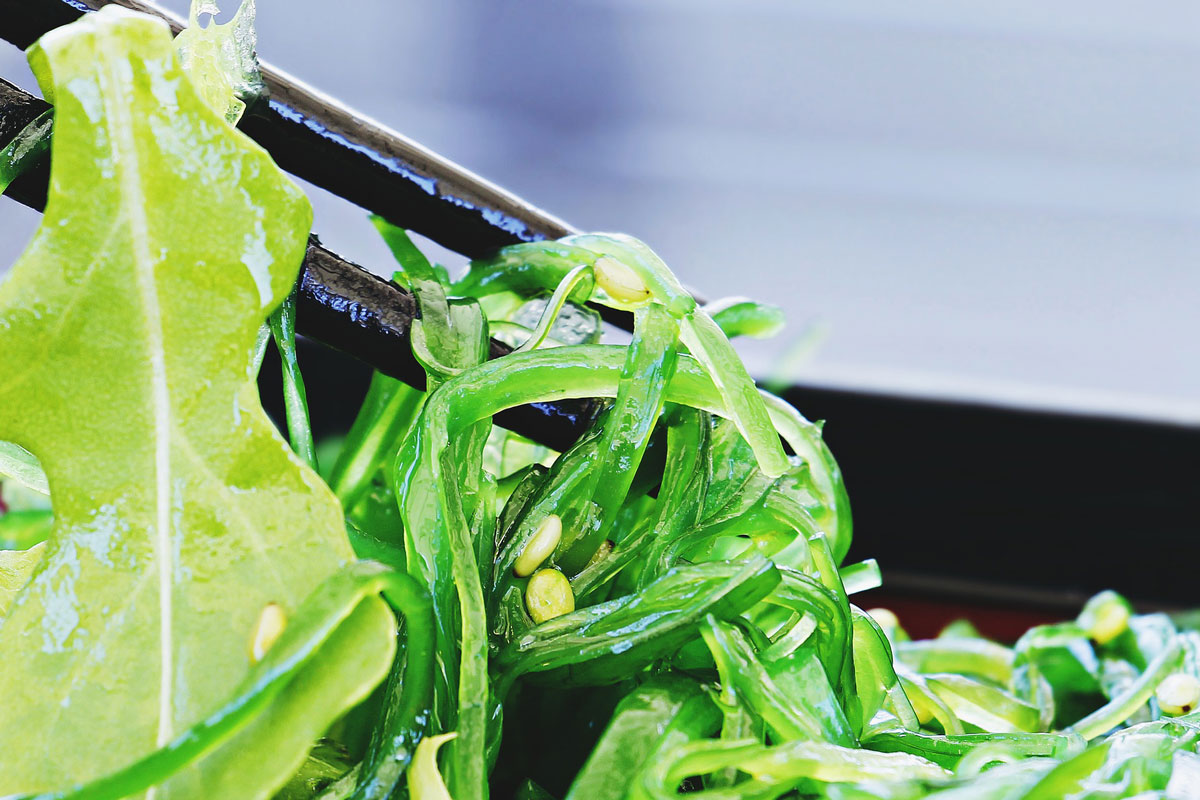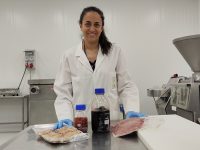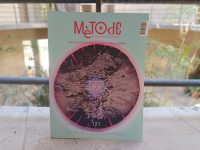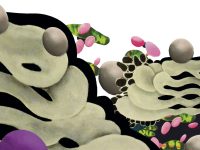
My first contact with algae was on the beach. They were mainly a mild nuisance when I was swimming; however, sometimes, when there was a plague, we avoided going to the beach because of the stench from the algae rotting on the sand, under the sun. The first time I ate seaweed was in a Japanese restaurant, probably in two dishes: the sushi roll (makizushi) and a seaweed and cucumber salad.
Algae are a heterogeneous group of organisms formed by cells with a nucleus that perform the photosynthesis. Although they usually inhabit aquatic environments, a few species colonised the land, and there are unicellular and multicellular species. Seaweeds are multicellular algae that grow close to the shorelines, independently from their climate, and they might have been part of the diet of the humans living in those areas since ancient times. Most cling to the sea bottom, but some are attached to other organisms and others float in the water. Currently, they are an important part of the diet in many Asian countries, especially China and Japan, but not in Western countries.
The colour of algae depends on the pigments they contain. All algae species contain chlorophyll, a green pigment, but many species contain other types of pigment as well. Red algae contain phycobilins, that tint them with red, orange and blue hues. On the other hand, brown algae contain fucoxanthin and a relatively low amount of chlorophyll.
Between 70 and 90 % of the weight of fresh algae corresponds to their water content. The composition of the dry part varies a lot, but it includes between 45 and 75 % of carbohydrates, between 7 and 35 % of protein, and less than 5 % of fat, along with lesser amounts of minerals and vitamins.
Regarding carbohydrates, we can find sugars, soluble fibre and insoluble fibre, but many of these compounds differ from those found in land plants, and are different depending on the type of algae. For example, regarding dietary soluble fibre, which keeps seaweed cells together, we have agar, carrageenans, and alginates. These substances play the same tole as pectins in plants. Among insoluble fibres, cellulose is the predominant component. It should be noted that algae have, in general, a much higher fibre content than vegetables and fruit. Our intestinal flora is not adapted to break down some of the carbohydrates present in algae. That is why, if we want to introduce them into our diet, it is recommended to do so slowly, in order to allow time for our body to adapt. Thus, it is reasonable to consume small portions of algae regularly, instead of large portions from time to time. The recommended amount is between five and ten grams of algae a day (dry weight).
The fat content of algae is low, between 1 and 5 %, depending mainly on the species. Within each species, it also depends on the place and time of year when it grows. But the hallmark of algae is that polyunsaturated fat constitutes between 30 and 70 % of the total fat content; among these fats, there are very polyunsaturated fatty acids. In fact, omega-3 fatty acids in fish and shellfish are not produced by them, but obtained from algae.
«Algae can be sustainably grown in large quantities in seas and oceans»
Another distinctive characteristic of algae when compared with cultivated plants is their mineral content, which is, on average, ten times higher than that of land plants. Primary minerals are iodine, calcium, phosphorus, magnesium, iron, sodium, potassium, and chlorine. In addition, they contain many important trace elements, such as zinc, copper, manganese, selenium, molybdenum, and chromium. It should be noted that mineral content varies significantly from one species to another.
Algae can be sustainably grown in large quantities in seas and oceans. That is the reason why many believe that in the future they will constitute an important part of food consumption in the world, and that they will alleviate world hunger. However, research is needed in order to achieve this, as well as the development of new methods and technologies for the cultivation, harvesting and processing of seaweed, and planning to make them effectively sustainable.
‘Wakame’ and cucumber salad Algae can be found in markets in different ways: fresh, in salt, dehydrated, powdered and canned, and the most common species are wakame (Undaria pinantifida), codium (Codium spp.), nori (Porphyra spp.), Irish moss (Chondrus crispus), sea lettuce (Ulva spp.), konbu (Laminaria ochroleuca) or sea spaghetti (Himanthalia elongata). Apart from the traditional use in Asian cuisine, among which Japanese dishes are the most well known, our cuisine has also developed all sorts of recipes that use them. In this sense, algae are highly valued in modern cuisine, thanks to their taste and texture. Taste depends mainly on how the seaweeds are prepared and on whether they are consumed raw, dried, roasted or boiled. But umami taste predominates: konbu has a particularly high glutamate content, and nori has nucleotides like inosinate and guanosinate. Ingredients 1 cucumber, dried wakame, vinegar rice, soy sauce, sesame oil, sugar. Instructions Cut the cucumber into very thin slices. Soak a tablespoon of dehydrated wakame seaweed in abundant water. Mix two tablespoons of rice vinegar, two tablespoons of soy sauce, a teaspoon of sesame oil and half a teaspoon of sugar. Put the cucumber in a bowl, and the drained seaweed on top. Add the dressing. Wait for a few minutes before serving the salad. |
References
McGee, H. (2007). La cocina y los alimentos: Enciclopedia de la ciencia y la cultura de la cocina. Barcelona: Debate.
Mouritsen, O. G. (2013). Seaweeds. Chicago: The University of Chicago Press.





